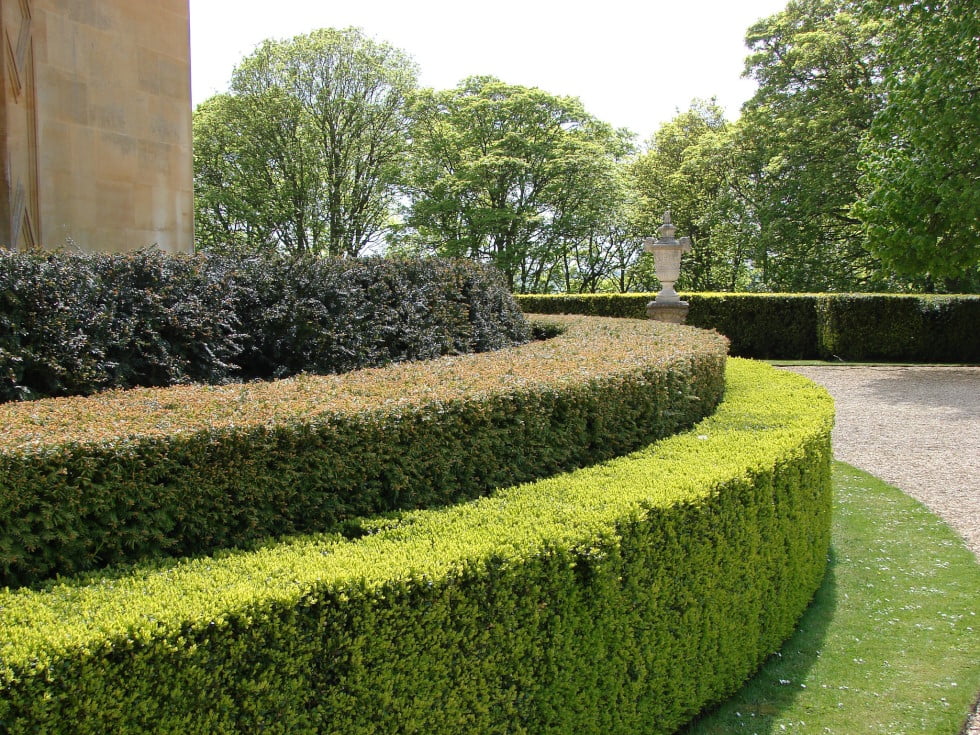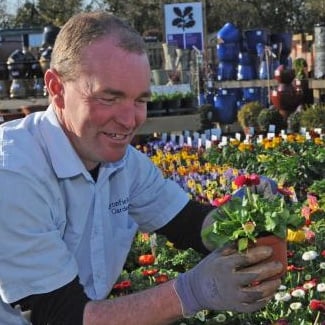British Native Hedging Available Now
Planting British native hedging in the UK can be a great way to create boundaries, provide privacy, and enhance the aesthetics of your garden or property. Hedges offer a natural and environmentally friendly alternative to traditional fences and are brilliant for wildlife. At The Nursery, we sell two-year-old, ‘protected’ plants of the following types:
Beech (Fagus):
Deciduous hardwood trees with smooth, gray bark. They are known for their distinctive, toothed leaves that turn golden bronze in autumn. Beech trees produce small, prickly husks that contain edible beechnuts.
Hornbeam (Carpinus):
Deciduous and often have a distinctive smooth, grayish bark. Their leaves are serrated, and they turn yellow-brown in the autumn. Hornbeams are commonly used for hedges and ornamental purposes.
Blackthorn (Prunus spinosa):
Deciduous shrub or small tree known for its dark, thorny branches. In spring, it produces white flowers before the emergence of dark purple to blackish sloe fruits. The wood is traditionally used for making walking sticks.
Hawthorn (Crataegus):
Deciduous shrubs or small trees with thorny branches. They have lobed leaves and produce clusters of white or pink flowers in spring, followed by small red or black fruits known as haws. Hawthorns are often used in landscaping and have cultural significance in folklore.
Dogrose (Rosa canina):
or wild rose, is a deciduous shrub with arching branches and sharp thorns. It produces fragrant pink or white flowers in spring, followed by red to orange rose hips. The rose hips are rich in vitamin C and are used in various culinary and medicinal applications.
Spindle (Euonymus europaeus):
Deciduous shrub known for its distinctive pink fruits with orange seeds that resemble capsules. The leaves turn vibrant shades of red and pink in the autumn. While attractive, parts of the plant are poisonous.
Wild Privet (Ligustrum vulgare):
Deciduous or semi-evergreen shrub with oval, dark green leaves. It produces clusters of small, white, fragrant flowers in late spring or early summer, followed by black berries. It is often used as a hedge plant.
Crab-Apple (Malus):
Deciduous trees or shrubs that produce small, sour apples. They are known for their ornamental value, with spring blossoms ranging from white to pink. Some varieties also have attractive autumn foliage.
Field Maple (Acer campestre):
Deciduous tree with lobed, dark green leaves. In autumn, the leaves turn yellow or orange. It produces small, inconspicuous flowers in spring. Field maple is native to Europe and is often used in landscaping and hedgerows.
By ‘protected’ we mean that rather than exposed bare root plants, we bundle them in groups of five and plant them in pots with compost. This isn’t to grow them but it does prevent the roots from drying out and protects the fine root fibres from getting damaged. Compared to exposed bare roots, this results in healthier British native hedging when planted that becomes established in the local environment more quickly.
Here are some key considerations when planting:
Choosing the Right Plants
Native species: Use British native hedging plants, as they are well-suited to the local climate and provide habitat for local wildlife. British native hedging plants have there own characteristics, so choose based on your preferences and the specific conditions of your site.
Site Preparation
Ensure the soil is well-draining and, if necessary, improve it by adding organic matter like compost.
Remove weeds and grass from the planting area.
Consider the amount of sunlight the area receives, as this will influence the choice of hedge plants.
Spacing and Planting:
Follow the recommended spacing for the specific hedge plant you choose. We usually recommend planting at 12 inches if a single row or 18 inches if a staggered double row to provide a denser hedge.
Watering
Water the newly planted hedge regularly, especially during dry spells, to help establish the plants.
Once established, many hedge plants are relatively drought-tolerant.
Mulching
Mulch around the base of the hedge to suppress weeds, retain moisture, and provide nutrients.
Use organic mulch like bark chips or compost.
Pruning and Maintenance
Regular pruning is essential to maintain the shape and density of the hedge.
The frequency and timing of pruning depend on the hedge species. Some hedges may need an annual trim, while others can be pruned less frequently.
Wildlife Considerations
Hedges can provide valuable habitat for birds, insects, and other wildlife. Consider this when choosing plants and when deciding to maintain your hedge.
Disease and Pest Control
Keep an eye out for signs of diseases or pests, and take appropriate measures if necessary. Early intervention can prevent the spread of issues.
Patience
Hedges take time to grow and fill out. Be patient and allow the plants to establish themselves.
Final thoughts from Matt
Remember that the specific steps and considerations may vary depending on the type of British native hedging plants you choose. At The Nursery we are always delighted to provide help and advice on a face-to-face basis. So do come along and have a look at our wide selection of native hedge plants and all our other healthy plants. We look forward to seeing you soon
Matt
The Nursery Garden Centre near Trowbridge is owned and operated by Matthew Webb, a professional horticulturist . Matthew built it from scratch and loves his job, his staff and his customers. Plants are his passion and he adores growing, nurturing and knowing as much as possible about them and then passing on his expert knowledge to staff and customers.



